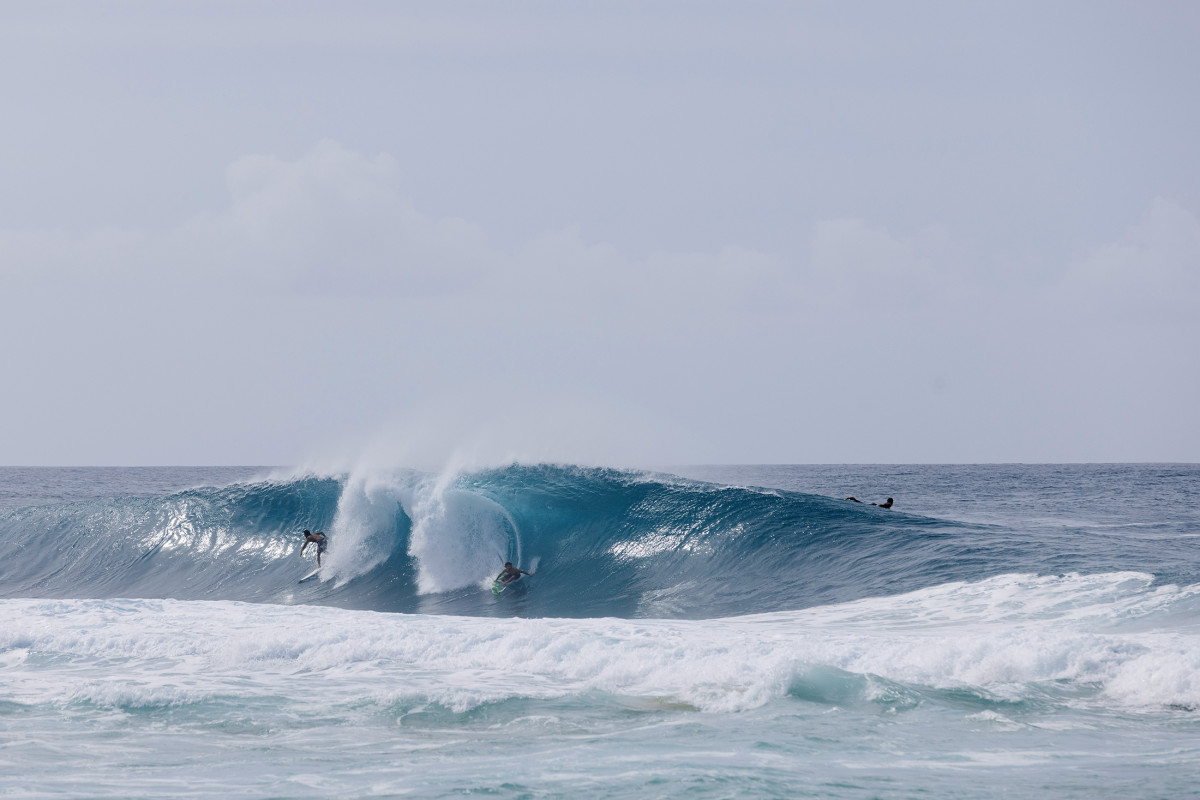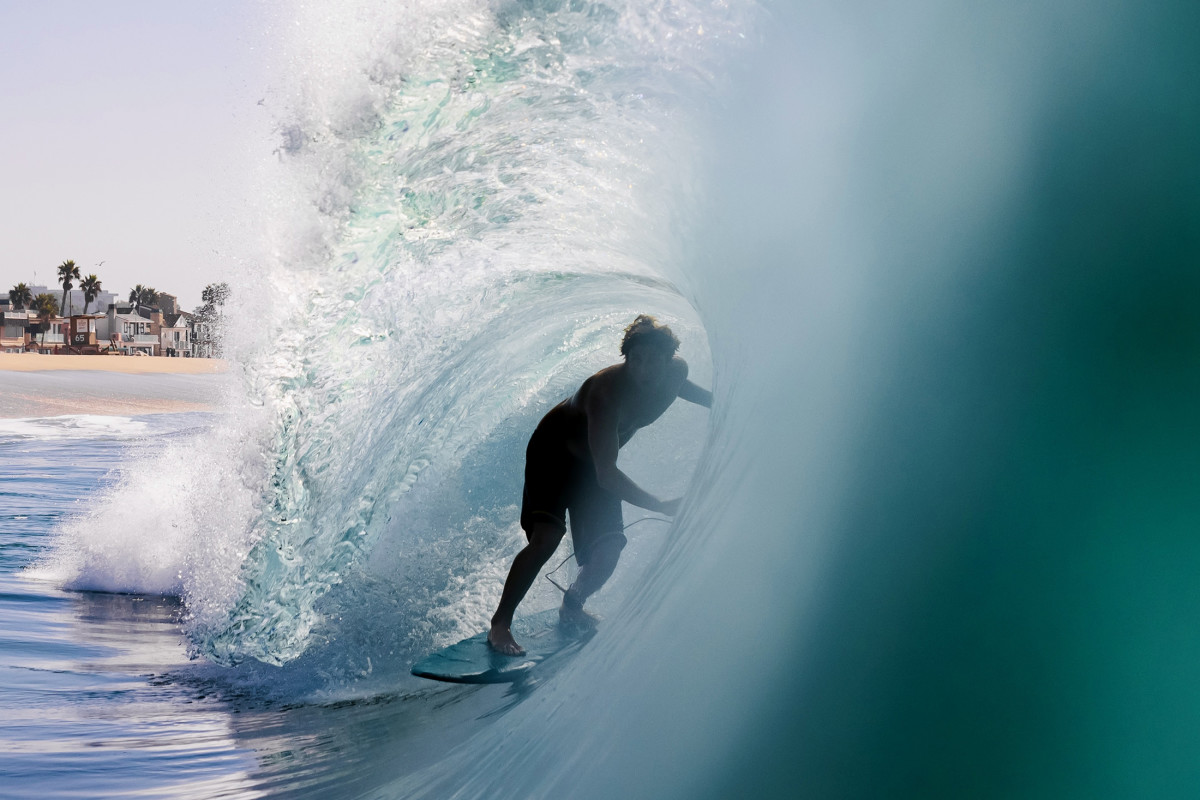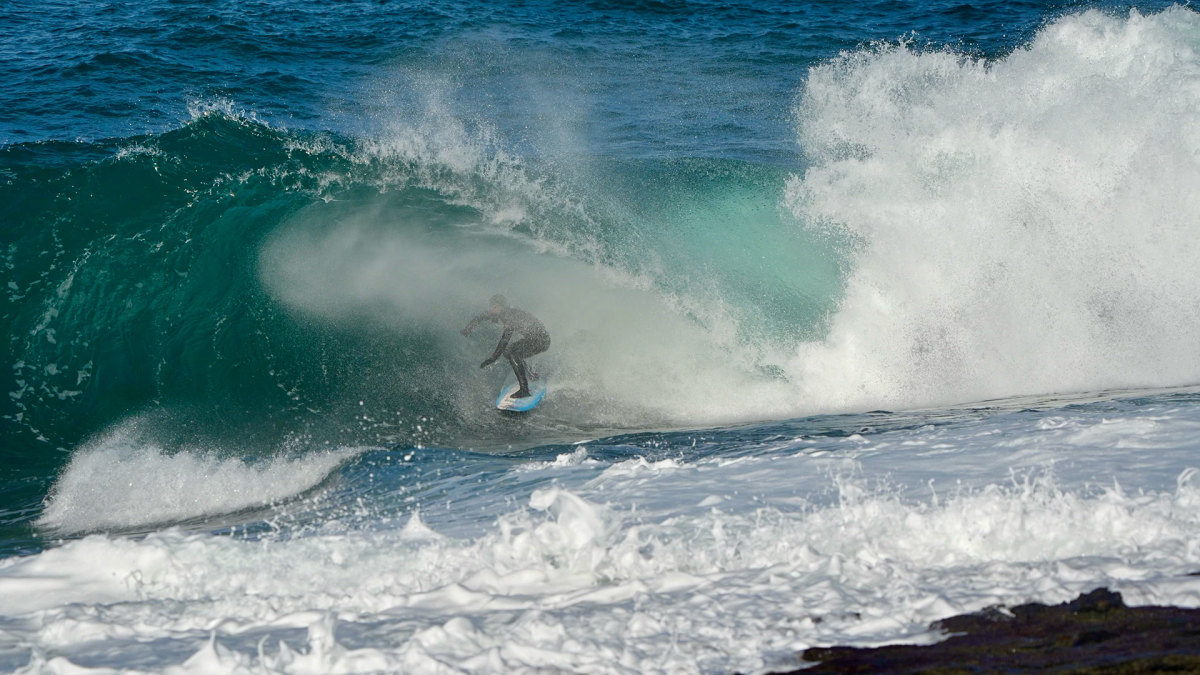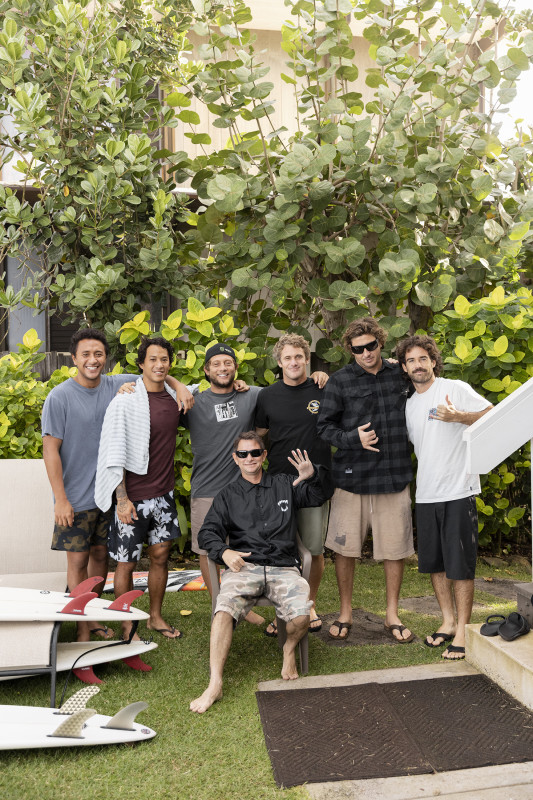
Kalani Cummins
“The Snapt films were just following on from the Taylor Steel model of surf films,” Logan “Chucky” Dulien told SURFER recently. “There’s no narrative, it’s basically like surf porn, based on surfer-led sections. The only goal is to get people psyched to go surfing.”
Perhaps the most remarkable feature of the franchise has been that it has straddled the analogue and digital eras. Back in 2002, there was no Internet, Instagram or live streaming. Surfers had to rely on VHS and DVD surf movies to get their fix.
Chucky was working with Volcom, and his house at Newport had become a doss house and party pad for a group of surfers including Bruce and Andy Irons, the Hobgoods twins, with the odd couch appearance by Mick Fanning.

Kalani Cummins
Like Taylor Steele with the Momentum Generation, Dulien realised that this group of young mates were on the cusp of taking over surfing. He bought an $800 video camera, taught himself how to use it, and set about chronicling their surfing – and the fun they had out of the water. It helped that in 2002, for Snapt1 he documented Andy Irons’ charge to his first World Title. Striking while the lightning was still in the bottle, Snapt2 came out the next year, as Andy went back-to-back. Part of the raw appeal of the movies however was the supporting cast of underground chargers, renegades and stylists like Asher Pacey, Aaron “Gorkin” Cormican, Geoff Brack and Kamalei Alexander.
Chucky then moved on to a creative and team management role under Pat Tenore’s new brand RVCA, and the franchise lay dormant for 12 years. When he returned in 2015 with Snapt3, the surfing landscape hadn’t so much changed, as it had been pixelated into a million bytes. The internet and social media meant surfers and brands were filming and releasing their own clips straight to the net. Gratification was immediate. Groms wouldn’t have known a VHS if one spooled around their throats.
The Snapt films’ appeal and Logan’s real genius however came from the same source: his relationships with the surfers. They trusted and worked hard for him. One of the key planks of this trust was that surfers agreed to hold back their best footage for their Snapt section from the Internet. In return, Chucky bent over backwards for them to make those sections the best surfing released that year. The key was releasing fresh, unseen footage.
“It’s not always easy,” says Dulien. “With Jack Robinson we had so much incredible footage shot during the pandemic, including ridiculous sessions at the Box. But we’d seen Jack surfing the Box since he was 12. Tom Jennings, the filmer, said the sessions were the best he’d seen of Jack out there. But none of it made it into Snapt4.”

Dulien
Often Chucky would become a de facto manager and champion for his roster of surfers. His roles in elevating the profile of surfers like Mason Ho, Parker Coffin, Benji Brand, and Clay Marzo cannot be understated. Just last week we talked to him about the lengths, financially and emotionally, he went to help Marzo gain a new contract with RVCA.
“Guys like Mason and Clay, they are artists,” says Dulien “Their surfboards are their paintbrush and the oceans the canvas. They just approach surfing differently and because of that, they are a key part of Snapt. My job is just trying to capture it so the world can see their talent.”

Kalani Cumins
However, even with the surfers and their filmers’ support, Dulien has tired of being one of the few independent bulwarks against the incessant tide of social media. He says the industry is more interested in the number of followers an athlete has, rather than the raw talent. More than two decades after the first film, Snapt5 will be the last of a very important surf culture institution.
“I’m just in it ’cause I love surfing,” Dulien concluded. “Snapt5 won’t be any different. Great surfers, doing great surfing to get people psyched to go surfing. It’s not exactly rocket science.”
Related: Mason Ho and Ian Crane Descend on Surf Ranch For “Snapt5” Film

